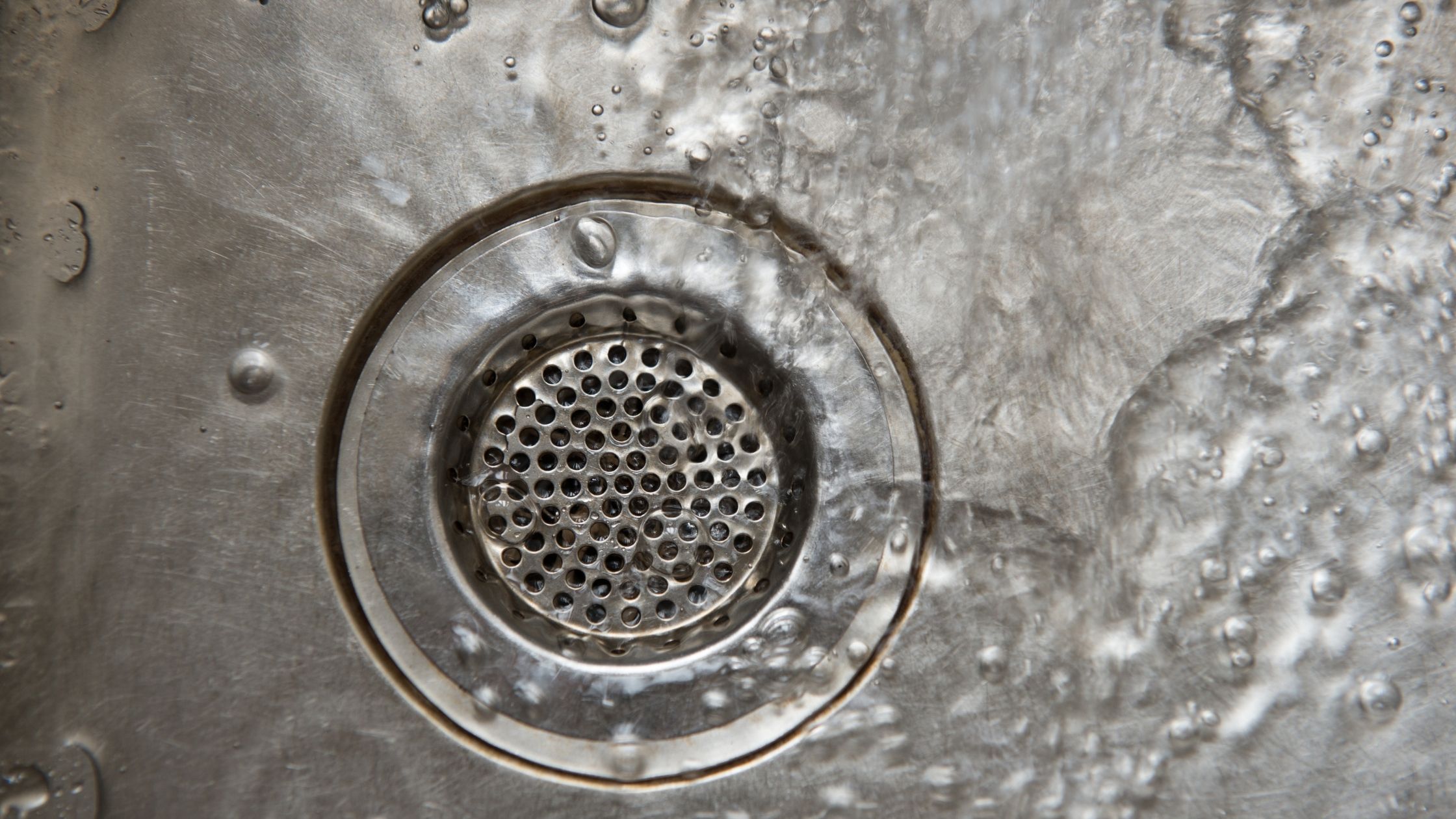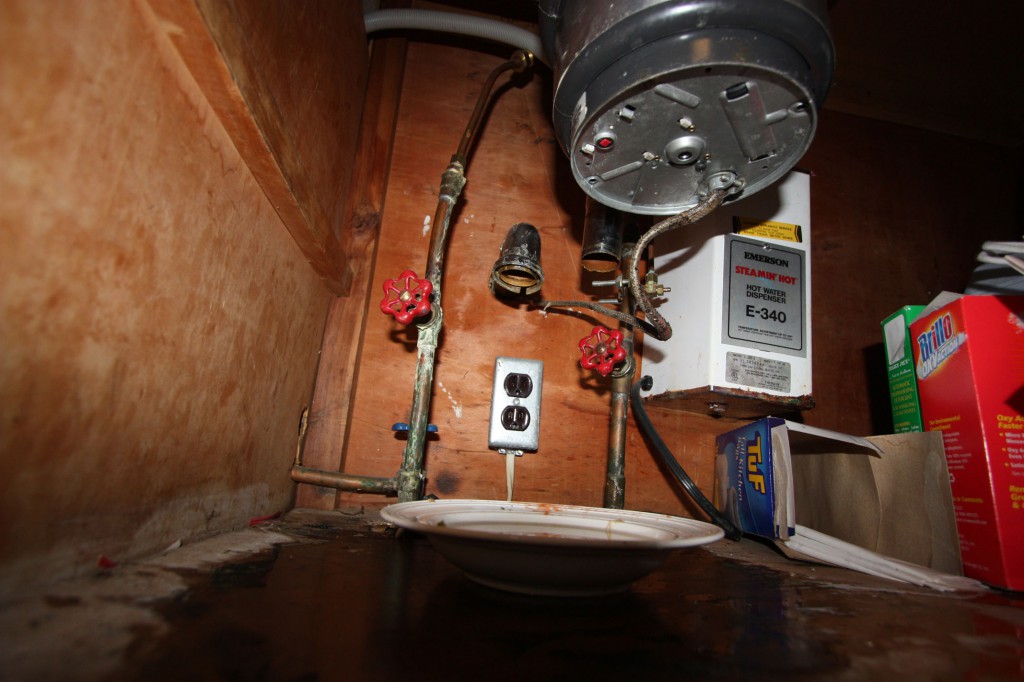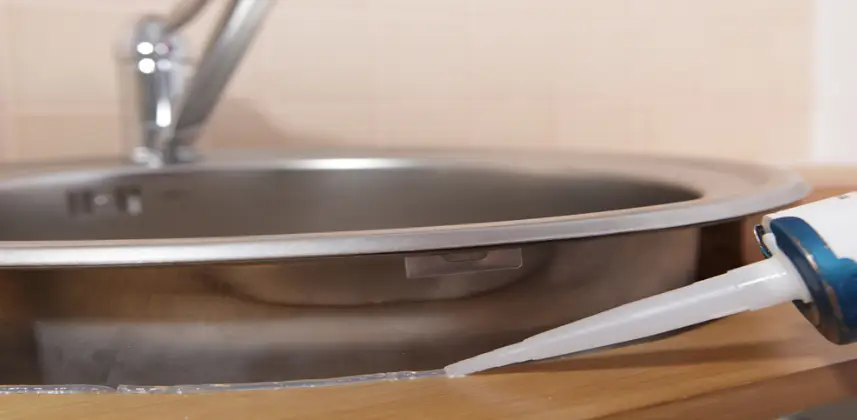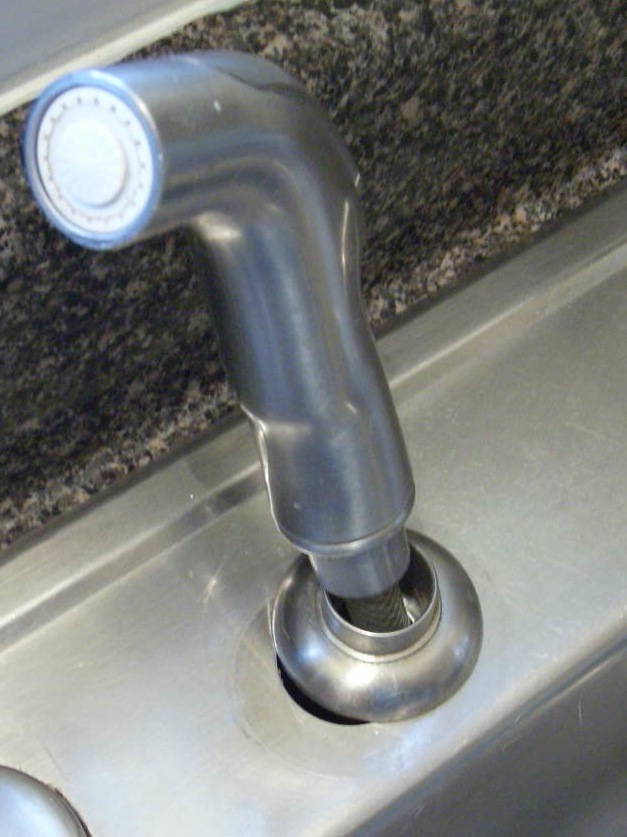1. How to Fix a Leaky Kitchen Sink
Dealing with a leaky kitchen sink can be a frustrating and messy ordeal. Not to mention, it can also result in wasted water and potential damage to your cabinets and flooring. But fear not, fixing a leak under your kitchen sink is a task that you can easily tackle on your own. In this guide, we'll walk you through the steps to fix a leaky kitchen sink and get your pipes back in working order.
2. DIY: Fixing a Leaky Kitchen Sink
If you're the type of person who likes to take matters into your own hands, then fixing a leaky kitchen sink is the perfect project for you. With a bit of know-how and the right tools, you can save yourself time and money by handling the repair yourself. Plus, there's a certain sense of satisfaction that comes with fixing something on your own. So roll up your sleeves and let's get started!
3. Step-by-Step Guide to Fixing a Kitchen Sink Leak
Before you begin the repair process, it's important to identify the type of leak you're dealing with. Is it a drip or a steady stream? Is the leak coming from the faucet or the pipes underneath? Once you've determined the source of the leak, you can follow these steps to fix it:
Step 1: Turn off the water supply to your kitchen sink. This can usually be done by turning the shut-off valves located under the sink.
Step 2: Place a bucket or towel under the pipes to catch any excess water.
Step 3: Use a wrench to loosen and remove the pipes that are leaking. Be sure to have a bucket or towel ready to catch any water that may still be in the pipes.
Step 4: Inspect the pipes for any cracks or damage. If you find any, you will need to replace them with new ones.
Step 5: Clean the pipes and fittings with a pipe brush to remove any debris or buildup that may be causing the leak.
Step 6: Apply plumber's tape to the threads of the pipes and fittings to create a tight seal.
Step 7: Reattach the pipes and tighten them with your wrench.
Step 8: Turn the water supply back on and check for any leaks. If everything looks good, you're all set!
4. Common Causes of Kitchen Sink Leaks and How to Fix Them
There are several reasons why your kitchen sink may be leaking, and it's important to identify the cause in order to properly fix the issue. Some common causes of kitchen sink leaks include:
1. Loose or worn out fittings: Over time, the fittings and connections in your pipes can become loose or worn out, causing leaks. This can easily be fixed by tightening or replacing the fittings.
2. Cracked or damaged pipes: If you find a crack or hole in one of your pipes, it will need to be replaced in order to stop the leak.
3. Clogged or damaged drain: A clogged or damaged drain can cause water to back up and leak out of the sink. Clearing the blockage or replacing the drain will fix the issue.
5. Quick and Easy Solutions for a Leaky Kitchen Sink
If you're dealing with a small leak, there are a few temporary solutions you can try until you're able to properly fix the issue. These include:
1. Using a leak repair tape: This is a quick and easy fix for small leaks. Simply wrap the tape around the leaky area to create a temporary seal.
2. Placing a bucket under the leak: This will catch any water that may drip out and prevent damage to your cabinets or flooring.
3. Using a pipe clamp: If the leak is coming from a joint, you can use a pipe clamp to create a temporary seal until you're able to replace the damaged part.
6. Troubleshooting a Kitchen Sink Leak: What to Look For
If you're unsure of the source of the leak, here are a few things you can check to help troubleshoot the issue:
1. The faucet: Check the faucet for any visible leaks or drips. If you find one, it may be caused by a faulty washer or O-ring that will need to be replaced.
2. The pipes: Inspect the pipes for any cracks, holes, or loose fittings. These are the most common sources of leaks.
3. The drain: If the leak is coming from the drain, it may be caused by a clog or damaged drain. Clearing the blockage or replacing the drain will solve the issue.
7. Tools and Materials You'll Need to Fix a Kitchen Sink Leak
Before you start the repair process, make sure you have the necessary tools and materials. These may include:
- Wrench
- Pipe brush
- Plumber's tape
- Replacement pipes and fittings (if needed)
8. Professional vs. DIY: Which is the Best Way to Fix a Kitchen Sink Leak?
Deciding whether to hire a professional or handle the repair yourself is a personal choice. If you're confident in your DIY skills and have the necessary tools and materials, fixing a leaky kitchen sink can be a simple and cost-effective task. However, if you're unsure of the source of the leak or don't feel comfortable handling the repair, it's best to hire a professional plumber to ensure the job is done correctly.
9. Preventing Future Leaks: Tips for Maintaining Your Kitchen Sink
Once you've fixed the leak, you'll want to prevent it from happening again in the future. Here are a few tips for maintaining your kitchen sink and preventing leaks:
- Regularly check for leaks and fix them as soon as they're spotted.
- Avoid using chemical drain cleaners, as they can damage your pipes and cause leaks.
- Don't overload your sink with heavy items, as this can put strain on the pipes and cause them to leak.
10. How to Hire a Plumber to Fix a Kitchen Sink Leak
If you've decided to hire a professional to fix your kitchen sink leak, here are a few tips to help you find the right plumber:
- Ask for recommendations from friends and family.
- Do your research and read reviews before hiring a plumber.
- Get multiple quotes to ensure you're getting a fair price.
- Make sure the plumber is licensed and insured.
With these tips and steps, you should now be able to confidently fix a leak under your kitchen sink and keep your pipes in good working condition. Remember to regularly check for leaks and address them promptly to avoid any further issues. And if you're ever in doubt, don't hesitate to call a professional for help. Happy fixing!
Why Fixing a Leak Under Your Kitchen Sink Should Be a Priority

The Importance of Addressing a Leak
 When it comes to house design, every homeowner wants their space to be functional, comfortable, and aesthetically pleasing. However, even the most meticulously designed houses can face issues such as leaks under the kitchen sink. While it may seem like a small issue, it is important to address it as soon as possible. Not only can a leak cause damage to your cabinets and flooring, but it can also lead to mold growth and structural damage if left unattended. Moreover, a leak can also result in higher water bills, adding to your household expenses. Therefore, it is crucial to take immediate action when you notice a leak under your kitchen sink.
When it comes to house design, every homeowner wants their space to be functional, comfortable, and aesthetically pleasing. However, even the most meticulously designed houses can face issues such as leaks under the kitchen sink. While it may seem like a small issue, it is important to address it as soon as possible. Not only can a leak cause damage to your cabinets and flooring, but it can also lead to mold growth and structural damage if left unattended. Moreover, a leak can also result in higher water bills, adding to your household expenses. Therefore, it is crucial to take immediate action when you notice a leak under your kitchen sink.
Causes of a Leak Under the Kitchen Sink
 Before we dive into how to fix a leak under your kitchen sink, it is essential to understand the common causes of this issue. One of the most common reasons for a leak is a loose or damaged pipe. Over time, pipes can become loose due to wear and tear, causing water to leak out. Another common cause is a faulty or worn out seal around the sink drain or garbage disposal. The constant use of these fixtures can cause the seal to deteriorate, leading to leaks. Additionally, a clogged drain can also lead to a leak under the kitchen sink as the water has nowhere to go and starts to seep out. It is important to identify the cause of the leak to ensure it is fixed properly and prevent it from happening again in the future.
Before we dive into how to fix a leak under your kitchen sink, it is essential to understand the common causes of this issue. One of the most common reasons for a leak is a loose or damaged pipe. Over time, pipes can become loose due to wear and tear, causing water to leak out. Another common cause is a faulty or worn out seal around the sink drain or garbage disposal. The constant use of these fixtures can cause the seal to deteriorate, leading to leaks. Additionally, a clogged drain can also lead to a leak under the kitchen sink as the water has nowhere to go and starts to seep out. It is important to identify the cause of the leak to ensure it is fixed properly and prevent it from happening again in the future.
How to Fix the Leak
 Now that we have established the importance of addressing a leak and identified the common causes, let's look at how to fix the issue. The first step is to turn off the water supply to your kitchen sink. Next, inspect the pipes and seals for any damage or looseness. If you notice any issues, tighten the pipes or replace the damaged parts. If the issue is a clogged drain, use a plunger or a drain snake to clear the blockage. Finally, turn the water supply back on and check if the leak has been fixed. If the problem persists, it is best to call a professional plumber to ensure the issue is resolved correctly.
Now that we have established the importance of addressing a leak and identified the common causes, let's look at how to fix the issue. The first step is to turn off the water supply to your kitchen sink. Next, inspect the pipes and seals for any damage or looseness. If you notice any issues, tighten the pipes or replace the damaged parts. If the issue is a clogged drain, use a plunger or a drain snake to clear the blockage. Finally, turn the water supply back on and check if the leak has been fixed. If the problem persists, it is best to call a professional plumber to ensure the issue is resolved correctly.
Conclusion
 In conclusion, a leak under the kitchen sink may seem like a minor inconvenience, but it can lead to significant damage and expenses if not addressed promptly. By understanding the importance of fixing a leak, identifying the common causes, and knowing how to fix the issue, you can ensure your house remains in top condition. Remember to regularly inspect your pipes and drains to prevent leaks, and if the issue persists, do not hesitate to seek professional help. A small leak can turn into a big problem, so make it a priority to fix any leaks under your kitchen sink as soon as possible.
In conclusion, a leak under the kitchen sink may seem like a minor inconvenience, but it can lead to significant damage and expenses if not addressed promptly. By understanding the importance of fixing a leak, identifying the common causes, and knowing how to fix the issue, you can ensure your house remains in top condition. Remember to regularly inspect your pipes and drains to prevent leaks, and if the issue persists, do not hesitate to seek professional help. A small leak can turn into a big problem, so make it a priority to fix any leaks under your kitchen sink as soon as possible.












































































:max_bytes(150000):strip_icc()/Basic-kitchen-sink-types-1821207_color_rev-0b539306b9ef4236a136624ad2a89a4c.jpg)
















